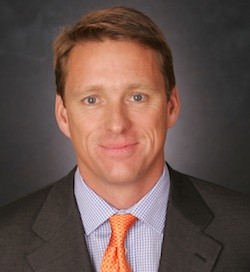Data centers have evolved into de facto nerve centers of capital markets; serving as hubs of e-commerce and the places through which market data flows via matching engines, and where companies house their critical applications and data stores.
Often bigger than football fields, data centers are the physical embodiment of cloud computing, which has spawned an alphabet soup of new ‘as a service’ offerings, such as software as a service (SaaS), infrastructure as a service (IaaS) and platform as a service (PaaS). Data centers operate behind the scenes—the average retail investor on Main Street may not even know they exist—but they are indispensable to the day-to-day functioning of financial markets.
“Data centers have become invisible headquarters, not only because all processing takes place there, but also companies accumulate terabytes of data every day and all that data from orders to e-mails is stored at the data center facilities,” said Mikhail Malamud, a consultant who advises Fortune 500 companies on usage of cloud management software such as Rightscale, OpenStack and OpenNebula, as well as ‘DevOps’ (development and operations) software such as Puppet and Chef.
There are two clear and distinct reasons that capital market participants have migrated towards hosting their equipment in strategic data center locations: latency and business agility. With electronic trading now over 80% of the volume on equity markets, price-time priority markets give dramatic advantages to market participants with the fastest technologies.
“Hardware acceleration and low-latency hardware infrastructure have brought the systemic latency of trading system components down into the single-digit microsecond range,” said Shawn Kaplan, general manager of financial services at data center provider Telx.
Even at the speed of light, data can only move at roughly 10 microseconds per kilometer, making the transit latency between two data centers run easily into the hundreds of microseconds.
“High-frequency trading shops long ago figured out the benefits of hosting in the same data centers as the exchanges,” Kaplan said. “However, traders with longer horizon investment strategies and strategies which rely on information from all exchanges have leaned towards the central proximity sites such as 111 8th [New York], 350 Cermak [Chicago] or 100 Delawanna [Clifton, New Jersey].”
Disaster Recovery
Data centers have also proven critical to a firm's survival in the event of a natural disaster.
With the lingering impacts of Superstorm Sandy slowly receding, financial firms are beginning to reassess their business continuity and disaster recovery plans in the event that another once-in-a-century event hits.
In lower Manhattan, the bedrock of the financial community, some of the largest firms were severely impacted by the storm.
GFI Group, the inter-dealer broker, still does not have access to its headquarters at 55 Water Street.
 Colin Heffron, president, GFI Group
Colin Heffron, president, GFI Group
“Though our offices were not damaged by the storm as they are on higher floors, the building had waist-high water in the lobby,” said Colin Heffron, president of GFI Group. “The entire building lost power supply because the switches and electrical vaults are below ground. This building is the city’s largest office structure.”
Still, the company was up on its feet within hours after the storm hit. “We activated our disaster recovery and business continuity plans and all of our technology was up and running by Wednesday following the storm,” Heffron said. “All of our proprietary hybrid trading systems and matching technology were in operation.”
GFI Group’s disaster recovery plan includes a backup site in Carlstadt, New Jersey, where it has 35 guaranteed seats that are fully-tested and operational, and an option on another 50 seats; none of the additional 50 was immediately available, however. The company has another disaster recovery site in Iselin, New Jersey, where it has 180 seats.
As a byproduct of the rise of electronic trading, data centers have eclipsed trading floors as the venues where most transactions get executed and, as would be expected, capital investment has followed. Telx, for example, operates 17 data centers across the U.S., including in New York and northern New Jersey, Chicago, San Francisco, Dallas and Los Angeles.
Exchanges, on their own or in partnership with data center operators, provide connectivity to their own trading venues as well as to ‘away’ venues. They also sell premium-priced rack space in close proximity to their matching engines.
Financial Ecosystems
A critical mass of exchanges, alternative trading systems, sell side and buy side firms, market data vendors, clearing houses, as well as technology and connectivity vendors are all being housed in each data center and coalescing to form financial ecosystems.
With trading profits down substantially and high-frequency trading under significant pressure to survive, let alone thrive, infrastructure specialists are putting more emphasis on cost-containment and reduction.
“With a dense concentration of counterparties in the key data centers, the cost of connectivity has dropped substantially,” said Kaplan of Telx. “Instead of signing a multi-year contract with a fiber carrier, connecting to your trading partners is as easy as a cross-connect within the data center which is far more cost effective, particularly at 10 gig.”
Massive changes afoot in capital markets, in the form of regulations, is also acting as a catalyst for ecosystems.
“Coupled with the evolving nature of market ‘interconnectedness’ and an exploding diversity of data flows, unprecedented global regulatory drivers are forcing the OTC swaps market into a more exchange-like environment, complete with more-automated workflows,” said Paul Rowady, senior analyst at capital markets consultancy Tabb Group, in a recent blog posting.
“These new levels of complexity lead to myriad connectivity requirements among trading platforms, clearing brokers, clearing houses and the buy side. As a result, market participants are faced with the increasing need to immerse themselves and their trading systems within increasingly complex trading ecosystems.”














